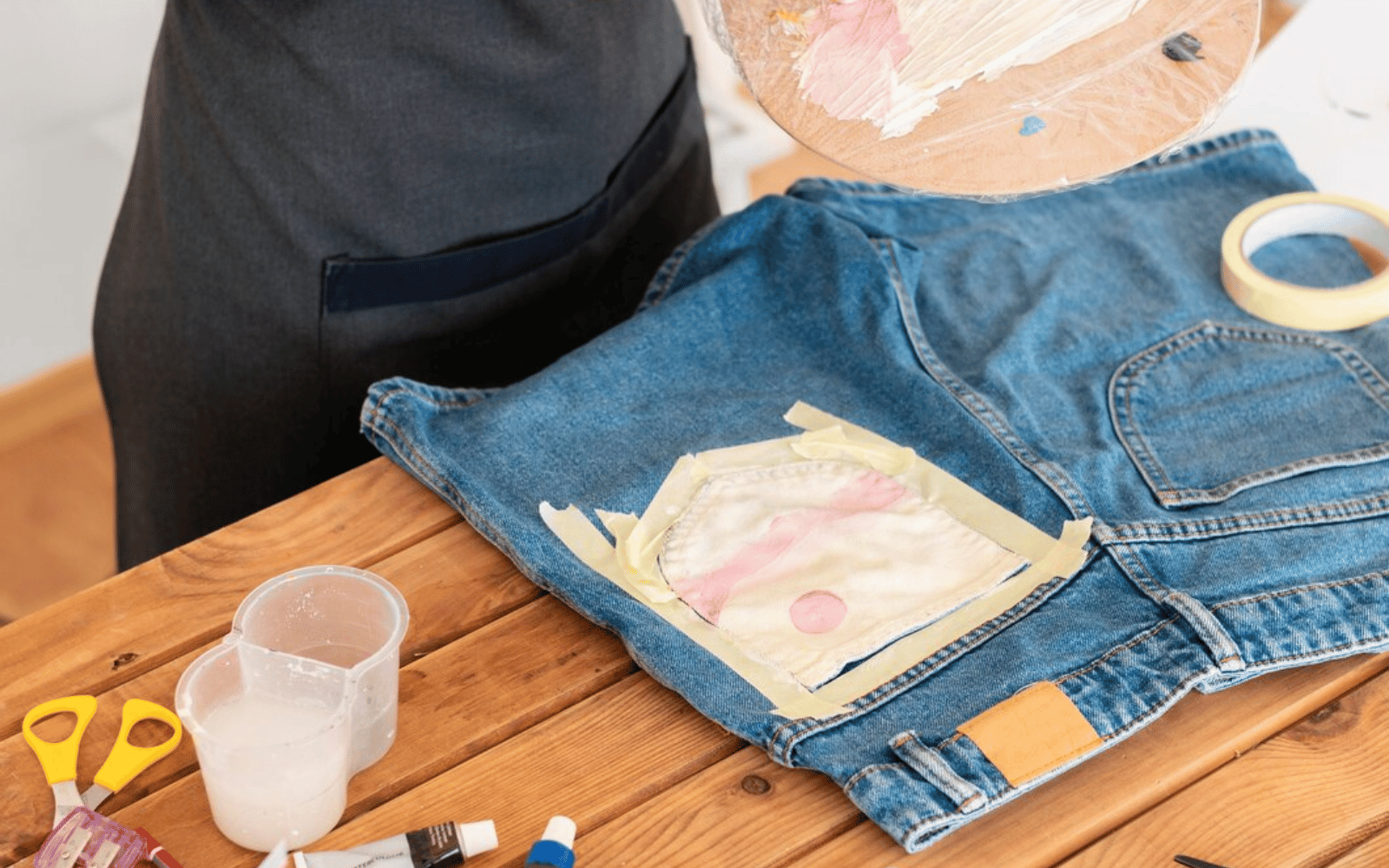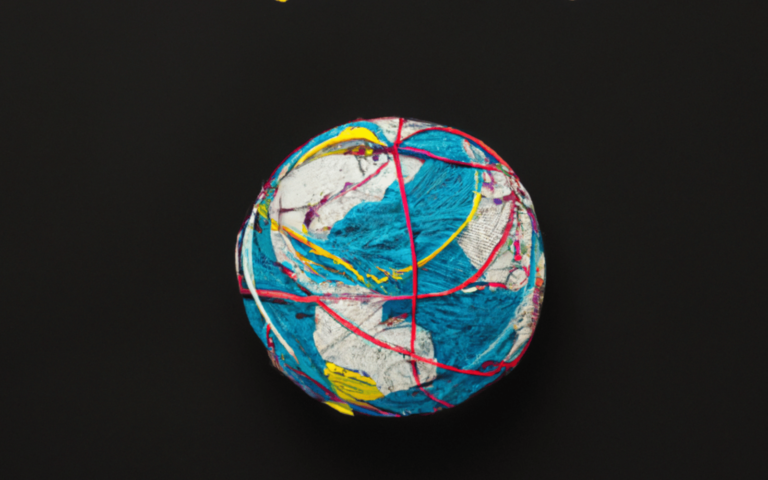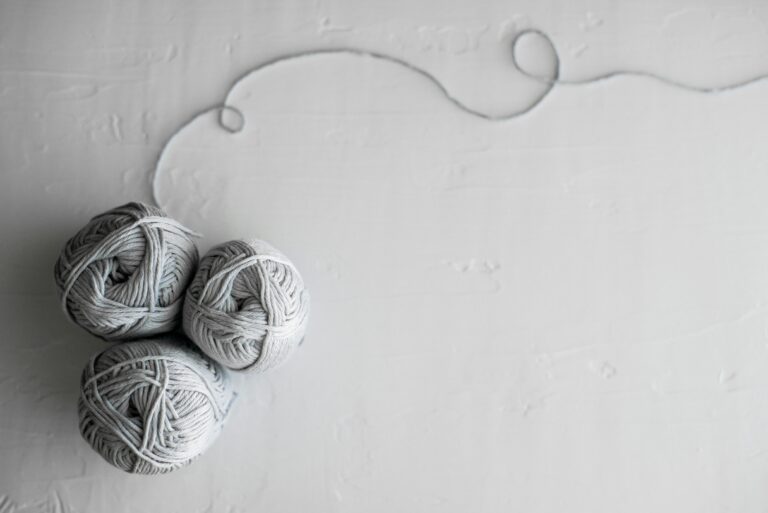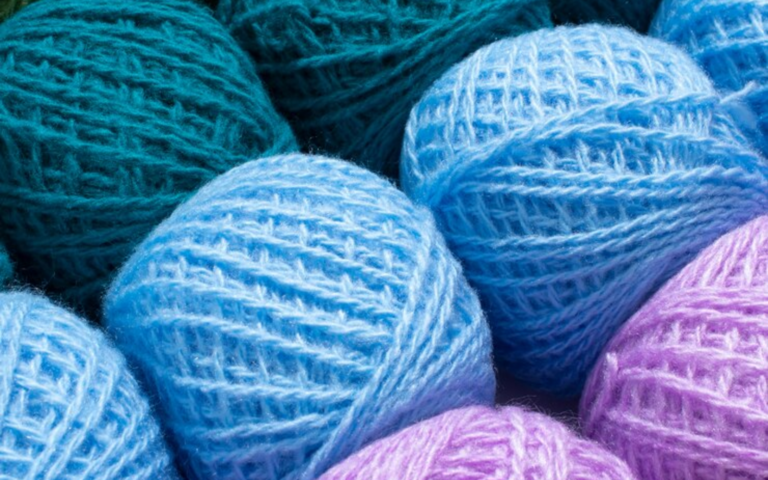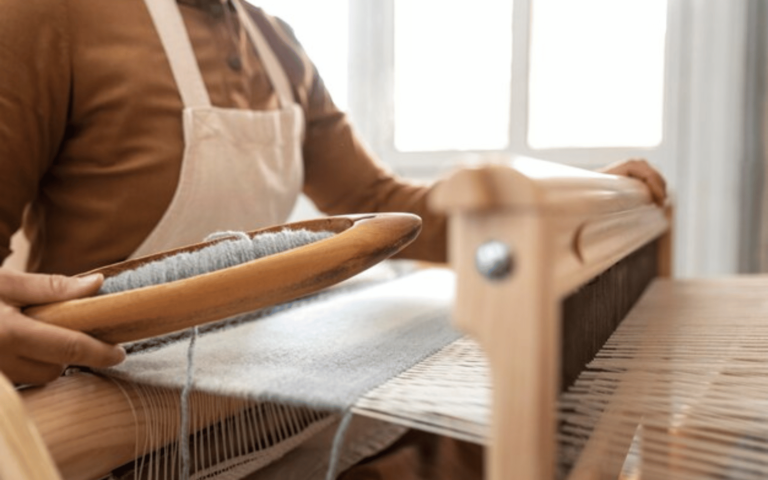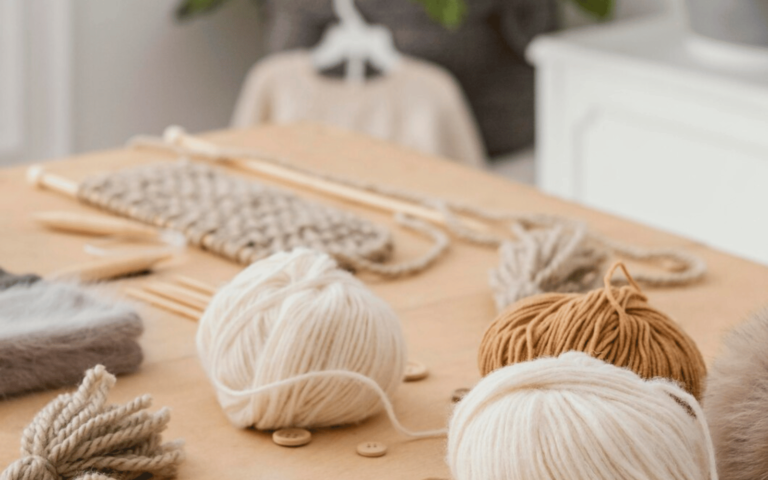Textile Art – Depths of New 2024
Textile art, a form that intertwines threads of history, culture, and creativity, stands as a testament to human ingenuity and craftsmanship. At its core, craftsmanship in textile art represents a harmonious blend of skill, tradition, and artistic expression. This article delves into the rich tapestry of textile art, unfolding its layers from ancient roots to contemporary innovations. We embark on a journey to analyze the intricate world of Craftsmanship Textile Art, understanding its evolution, techniques, and the profound impact it has had on both art and society. The world of textile art is as diverse as it is ancient. From the hand-spun fabrics of early civilizations to the digitally enhanced textiles of the modern era, each piece tells a story of cultural identity, technological advancement, and artistic endeavor. The realm of Craftsmanship Textile Art is not just about the creation of materials but also about the preservation of cultural heritage and the expression of individual and collective narratives through fabric and thread.
Historical Roots of Craftsmanship Textile Art
Textile art has an ancient and storied past, stretching back thousands of years. It originated out of necessity, evolving from simple hand-spun fabrics to elaborate tapestries and garments that signified status and heritage. The earliest textiles, made from natural fibers like cotton and flax, were not just utilitarian objects but also mediums of artistic expression. These ancient fabrics bore the mark of the cultures that created them, infused with symbolic designs and techniques passed down through generations. The transition from traditional to modern textile art is marked by the adoption of new materials and methods. However, the essence of Craftsmanship Textile Art remained constant: a deep respect for the material and a meticulous approach to creation. In many cultures, textile art was more than a craft; it was a sacred process, laden with rituals and meanings. These traditional practices laid the foundation for the diverse and rich textile arts we see today.
Historically, textile art was often a communal activity, bringing together artisans and fostering a sense of community and shared purpose. It was not uncommon for entire villages to be involved in the production of a single textile piece, whether it was for clothing, shelter, or ceremonial use. This communal aspect of Craftsmanship Textile Art helped preserve techniques and traditions, allowing them to be passed on to future generations. The historical significance of textile art lies not just in its aesthetic or utilitarian value but also in its role as a cultural artifact. Textiles serve as a window into the past, providing insights into the daily lives, s, and artistic expressions of ancient civilizations. Through the study of old textiles, we can glean information about the technology, trade, and social structures of the times in which they were made.
Pioneers of Craftsmanship Textile Art
The world of textile art has been shaped by numerous pioneering artists, each bringing their unique perspective and techniques to the craft. Judith Scott, for instance, revolutionized textile art with her cocoon-like sculptures, wrapping yarn and fabric around everyday objects to create intricate and deeply personal pieces. Her work challenges conventional perceptions of textile art, blurring the lines between sculpture and fabric craft. El Anatsui, another trailblazer in the field, transforms simple materials like liquor bottle caps into monumental, shimmering tapestries. His work is a testament to the transformative of textile art, turning discarded materials into objects of beauty and narrative. Anatsui’s tapestries not only showcase exceptional Craftsmanship Textile Art but also comment on themes of consumption, waste, and cultural history.
Nick Cave, widely known for his “Soundsuits,” employs textile art to analyze identity and social justice. His elaborate, sculptural costumes, crafted from recycled materials, serve as both art pieces and performance instruments. Cave’s work highlights the versatility of textile art and its capacity to convey messages and evoke strong emotional responses. These artists, along with many others, have expanded the boundaries of textile art, introducing new materials, techniques, and concepts. Their contributions have not only enriched Craftsmanship Textile Art.
Techniques and Materials in Craftsmanship Textile Art
The techniques and materials used in textile art are as varied as the artists themselves. Traditional methods like hand-knotting, tufting, weaving, and embroidery have been passed down through generations, each evolving and adapting to the times. These techniques require not just skill and patience but also a deep understanding of the materials at hand, whether it’s natural fibers like wool and silk or synthetic materials like acrylic and nylon. Hand-knotting, for instance, is a technique often used in rug making, where artisans tie individual knots onto a set of warp threads to create intricate patterns and textures. This method, while time-consuming, allows for a high degree of detail and durability in the final product. Hand-tufting, on the other hand, involves pushing yarn through a fabric base to create a pile, which is then cut and shaped to form a plush surface.
Weaving is another fundamental technique in textile art, involving the interlacing of warp and weft threads to create cloth. This method can produce anything from simple, monochromatic fabrics to complex, multi-colored designs. Weaving is not just a method of fabric production; it’s also a form of artistic expression, with each weaver bringing their unique style and creativity to the loom. The choice of materials in textile art is as as the techniques used. Natural fibers like cotton, wool, and silk offer a range of textures and properties, each lending itself to different applications and effects. Synthetic fibers, developed in the modern era, have expanded the possibilities even further, offering new textures, colors, and functionalities. The interplay between different materials and techniques is what gives textile art its endless diversity and appeal.
Craftsmanship Textile Art in Contemporary Fashion
Textile art and fashion have always been intertwined, with the former often influencing and enriching the latter. Contemporary fashion designers frequently draw inspiration from traditional textile crafts, incorporating handwoven fabrics, intricate embroideries, and unique dyeing techniques into their collections. This fusion of ancient Craftsmanship Textile Art with modern design creates garments that are not only aesthetically stunning but also rich in cultural significance. In the high fashion world, designers like Alexander McQueen and Vivienne Westwood have been known to use textile art as a key element in their collections. Their use of elaborate embroideries, innovative fabric manipulations, and artisanal techniques brings a level of depth and intricacy to their designs, setting them apart in the fashion industry. These designers not only pay homage to the art of textiles but also push its boundaries, experimenting with new materials and methods to create something truly unique.
The influence of textile art in fashion is not limited to high-end designers. Many contemporary fashion brands are incorporating traditional textile techniques into their products, often in collaboration with artisan communities. This not only helps preserve these age-old crafts but also introduces them to a wider audience, fostering an appreciation for the skill and labor involved in creating handcrafted textiles. The integration of textile art in contemporary fashion also speaks to a growing desire for sustainability and ethical production. Consumers are increasingly seeking out garments that have a story, that are made with attention and respect for the environment. Handcrafted textiles, with their emphasis on quality and longevity, offer an alternative to the fast fashion model. By choosing clothes that incorporate traditional textile art, consumers are supporting not just the environment, but also the artisans and communities who keep these crafts alive.
Sustainability and Craftsmanship Textile Art
The intersection of sustainability and textile art is a aspect of the craft’s evolution. In an age where environmental concerns are paramount, textile artists and artisans are increasingly turning to sustainable practices. This shift is not just about choosing eco-friendly materials, but also about adopting processes that minimize waste, conserve energy, and preserve traditional techniques that have been inherently sustainable. Many textile artists are now using recycled or upcycled materials in their work, transforming old fabrics, plastic waste, and other discarded items into beautiful and meaningful art. This approach not only reduces waste but also challenges artists to think creatively about the materials they use. Moreover, the use of natural dyes, organic fibers, and techniques reduces the carbon footprint of textile art, making it more environmentally friendly.
Sustainability in textile art also involves preserving traditional crafts that are at of being lost. Many of these crafts are based on sustainable principles, using locally sourced materials and eco-friendly processes. By keeping these traditions alive, artists and communities are maintaining a link to their cultural heritage while also promoting a more sustainable approach to textile production. The growing interest in sustainable textiles has also spurred innovation, with artists and scientists collaborating to develop new materials and processes that are both environmentally friendly and artistically viable. These innovations are expanding the possibilities of textile art, making it a vibrant and forward-thinking field that responds to the challenges of our time.
Technological Advancements in Craftsmanship Textile Art
The integration of technology into textile art has opened new avenues for analyses and creativity. Digital tools and techniques are allowing artists to push the boundaries of traditional textile crafts, creating works that are at the intersection of art, technology, and design. One of maximum significant technological advancements in textile art is digital weaving and knitting. Computer-controlled looms and knitting machines enable artists to create complex, intricate patterns that would be impossible or extremely time-consuming to produce by hand. These technologies also allow for greater experimentation with materials and textures, leading to innovative fabric creations.
Another area where technology is making an impact is in the realm of textile printing. Digital printing techniques have revolutionized the way artists and designers approach fabric design, offering limitless possibilities for color, pattern, and imagery. This technology has not only enhanced the creative potential of textile art but also made it more accessible, allowing for small-scale, on-demand production. The use of technology in textile art is not just about creating new aesthetics; it’s also about analyzing new concepts and narratives. Interactive textiles, for example, incorporate sensors and electronic components to create fabrics that respond to their environment or the wearer’s movements. These textiles blur the lines between art, fashion, and technology, inviting us to reimagine the possibilities of fabric. While technology offers exciting opportunities for innovation in textile art, it also poses challenges. Artists must find a balance between embracing new technologies and preserving the handcrafted essence of traditional textile arts. This balance is in maintaining the authenticity and tactile quality that is at the heart of Craftsmanship Textile Art.
Cultural and Social Impact of Craftsmanship Textile Art
Textile art is not just a form of aesthetic expression; it is also a medium through which artists can engage with cultural and social issues. Throughout history, textiles have been used to tell stories, convey messages, and reflect the values and s of societies. In the contemporary context, textile artists are using their craft to comment on social, political, and environmental issues, making their work relevant and impactful. Many textile artists draw inspiration from their cultural heritage, using traditional techniques and motifs to analyze their identity and history. These works often serve as a bridge between the past and the present, preserving cultural traditions while interpreting them through a modern lens. By doing so, these artists are not only keeping their heritage alive but also sharing it with a broader audience, fostering greater understanding and appreciation of diverse cultures.
Textile art also provides a platform for social commentary. Artists use their work to address issues such as gender inequality, racial injustice, and environmental degradation. Through their art, they can raise awareness, provoke thought, and inspire action. These works often have a emotional impact, making complex or difficult subjects more accessible and relatable. The role of textile art in community building and education is also significant. Workshops, exhibitions, and collaborative projects bring people together, fostering a sense of community and shared purpose. Through these activities, participants can learn new skills, engage in creative expression, and connect with others. Textile art, with its tactile and approachable nature, is particularly well-suited to educational and community-building initiatives.
Craftsmanship Textile Art as a Therapeutic Medium
The therapeutic potential of textile art is increasingly being recognized and utilized in various settings. The act of creating with textiles can be meditative, providing a sense of calm and focus that can be beneficial. For many, the repetitive motions involved in weaving, knitting, or stitching can be soothing. Personal stories and case studies have shown how engaging in textile art can help individuals process emotions, cope with Injury, and express themselves in ways that words cannot. The tactile nature of textiles, combined with the creative process, allows for a unique form of self-expression and analyses. For some, it’s a way to tell their story; for others, it’s a means of finding their voice.
The psychological benefits of textile art are not limited to individual practice. Group projects and community workshops can foster connections, build confidence, and create a sense of belonging. These social aspects of textile art-making can be particularly beneficial for those who feel isolated or marginalized. Textile art as therapy is not just about the end product but the process itself. The act of making, the decisions involved in choosing materials and colors, and the physical engagement with the textile can all contribute to a sense of achievement and harmony. For many, the journey is as important as the destination, and the act of creating can be a tool for personal growth.
Teaching and Learning Craftsmanship Textile Art
The teaching and learning of textile art play a role in preserving and evolving this craft. Educational programs and workshops offer opportunities for people of all ages and backgrounds to learn about textile techniques, materials, and history. These educational experiences are essential for keeping traditional crafts alive and for fostering innovation in the field. Textile art education is not just about learning specific skills; it’s also about understanding the cultural and historical contexts of these crafts. By studying the traditions and techniques of different cultures, learners can gain a deeper appreciation for the diversity and richness of textile art. This knowledge can inspire new approaches and ideas, contributing to the evolution of the craft.
Institutions and educators specializing in textile art are key to this educational process. From formal degree programs to community workshops, these educators provide the guidance and expertise needed to learn textile arts. Their passion and knowledge are instrumental in inspiring the next generation of textile artists and enthusiasts. The importance of preserving traditional techniques cannot be overstated. As the world becomes increasingly digitized and automated, maintaining a connection to handcrafted arts is more important than ever. These traditional practices not only represent cultural heritage but also offer a counterpoint to the fast-paced, mass-produced world we live in. By learning and practicing these crafts, individuals can connect to a slower, more mindful way of creating and living.
Craftsmanship Textile Art in Museums and Galleries
Museums and galleries play a vital role in showcasing and promoting textile art. By featuring textile art in their exhibitions and collections, these institutions help elevate the craft to the level of fine art, recognizing its artistic and cultural value. These exhibitions not only display the beauty and intricacy of textile art but also educate the public about its history and techniques. Major exhibitions dedicated to textile art offer a platform for artists to share their work with a wider audience. These exhibitions can be eye-opening experiences, challenging viewers’ perceptions of what textile art can be. They can range from historical retrospectives to contemporary shows highlighting the latest innovations in the field.
The recognition of textile art in the art world has been a gradual process, with many traditional textile crafts historically being undervalued or overlooked. However, this is changing, with more museums and galleries recognizing the complexity, skill, and creativity involved in textile art. By featuring textile art, these institutions are helping to break down the barriers between “fine” art and “craft,” acknowledging the artistic merit of textile works. Galleries and museums specializing in textile art are important custodians of the craft. They not only display textile works but also engage in conservation efforts, ensuring that historical pieces are preserved for future generations. They often also conduct research and educational programs, further contributing to the understanding and appreciation of textile art.
Globalization and Craftsmanship Textile Art
In the ever-evolving landscape of craftsmanship textile art, globalization has played a crucial role in shaping both artistic expressions and the market dynamics of textiles. As the world becomes more interconnected, textile artists and craftspeople have access to a vast array of materials, techniques, and cultural influences that were once confined to specific regions. This integration has not only broadened the horizon for artistic creativity but also increased the competitive environment in which artists operate.
Globalization has facilitated the exchange of ideas and traditions across continents, allowing for a fusion of styles and innovations in textile art. Artists are now blending traditional weaving techniques from Asia with contemporary European designs, or incorporating indigenous patterns from Africa into modern American textile products. This cross-cultural exchange enriches the artistic tapestry of nations and offers a fresh perspective to both creators and consumers.
Moreover, the global market has expanded opportunities for textile artists to reach an international audience. Online platforms and social media have democratized the way art is marketed and sold, enabling artists from remote areas to showcase their work on the global stage. Artisans can now sell their creations directly to consumers around the world, bypassing traditional barriers and intermediaries. This direct connection not only boosts the economic prospects of individual artists but also promotes cultural appreciation and understanding among diverse audiences.
However, globalization also presents challenges such as increased competition and the risk of cultural appropriation. As artists from different backgrounds draw inspiration from global cultures, the line between appreciation and appropriation can often blur. It is imperative for artists to engage with cultural elements sensitively and ethically, ensuring that their work respects and honors the origins and meanings of the traditions they incorporate.
Furthermore, the environmental impact of global trade in the textile industry cannot be overlooked. The transportation of materials across great distances contributes to carbon emissions, which poses a challenge to sustainability efforts within the sector. Artists and producers are increasingly seeking eco-friendly options, such as locally sourced materials and sustainable shipping methods, to mitigate the environmental costs associated with globalization.
Globalization has significantly influenced the field of craftsmanship textile art, bringing both opportunities and challenges. It has enabled a rich exchange of cultural practices and expanded the reach of artists’ work. Nevertheless, it demands a balanced approach that respects cultural heritage and minimizes environmental impact, ensuring that the evolution of textile art continues to be a source of inspiration and innovation globally.
This exploration of globalization’s impact on craftsmanship textile art provides a comprehensive view of its benefits and complexities. By understanding these dynamics, artists, consumers, and policymakers can better navigate the globalized art landscape, fostering an environment that supports creativity, cultural exchange, and sustainable practices.
Outcome – Future of Craftsmanship Textile Art
The world of craftsmanship textile art is as vibrant and dynamic as it is ancient and storied. From its roots in ancient civilizations to its contemporary manifestations, textile art has continuously evolved, reflecting the changes and challenges of the times. As we look to the future, it is clear that textile art will continue to be an important medium for artistic expression, cultural preservation, and social commentary. The future of textile art is likely to be shaped by ongoing innovations in materials and technology, as well as a growing emphasis on sustainability and ethical production. These developments will open new possibilities for artists and makers, allowing them to analyze new forms and narratives. At the same time, the enduring appeal of traditional techniques and handcrafted textiles suggests that these practices will continue to be cherished and practiced.
Textile art’s ability to bridge the past and the present, to combine the tactile with the conceptual, and to engage both the artist and the viewer makes it uniquely. It is a form of art that touches on all aspects of human experience – aesthetic, functional, cultural, and emotional. As we move forward, it is clear that the Craftsmanship Textile Art and creativity that define textile art will continue to inspire and connect us, weaving a tapestry of human expression that is as diverse and beautiful as the world itself.
See More At: woolen8wonders.com

